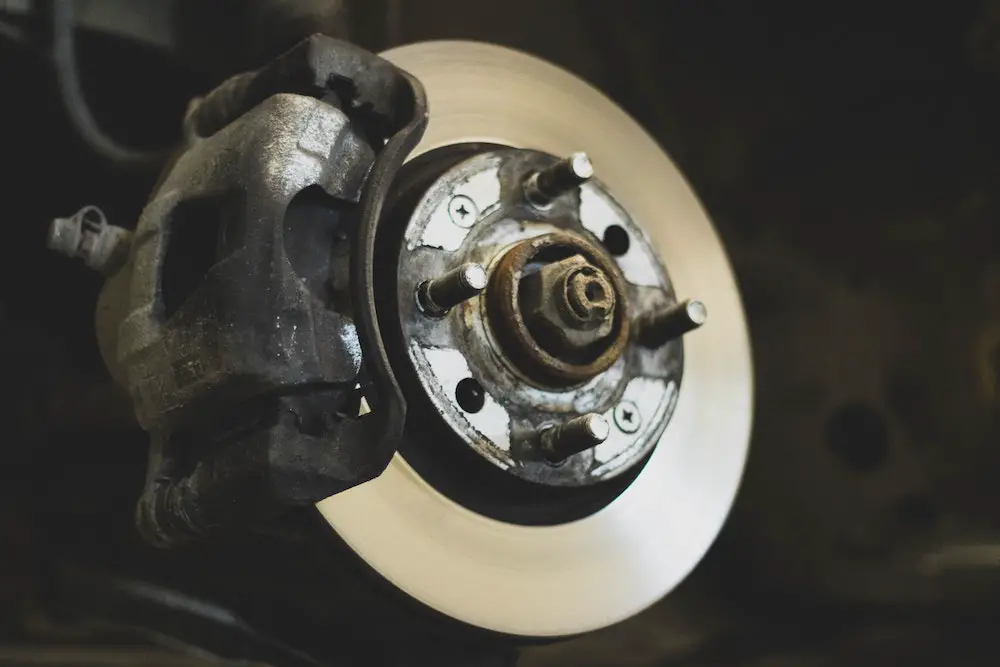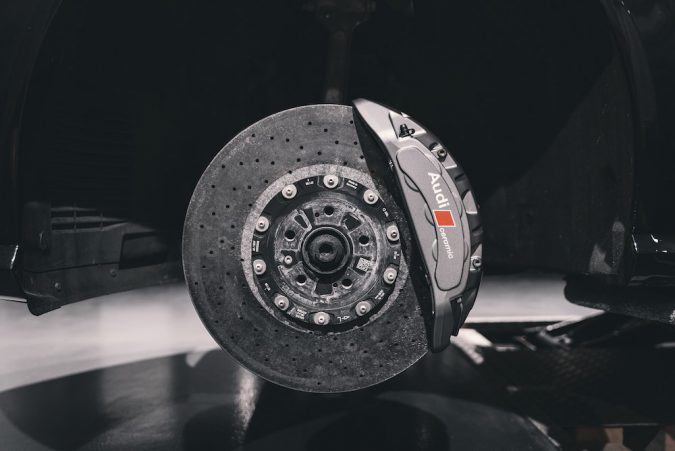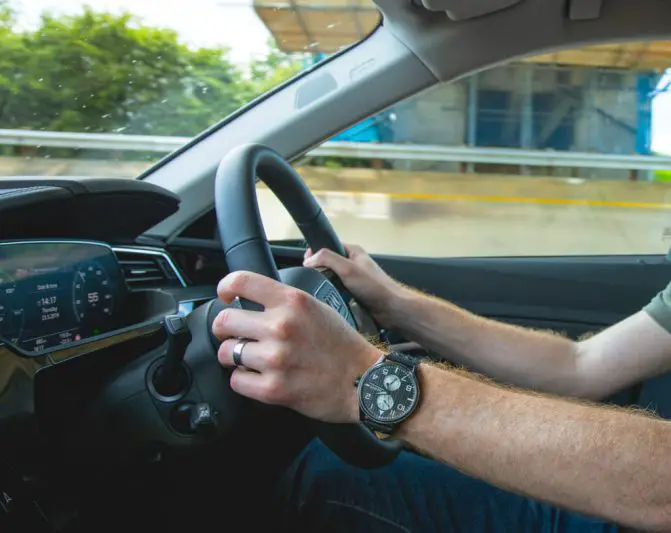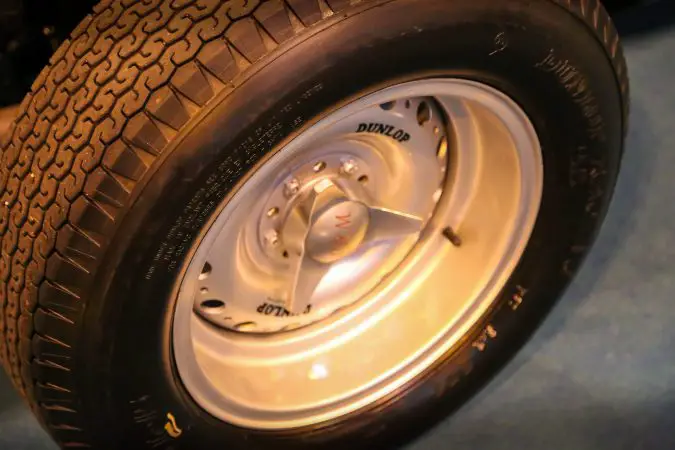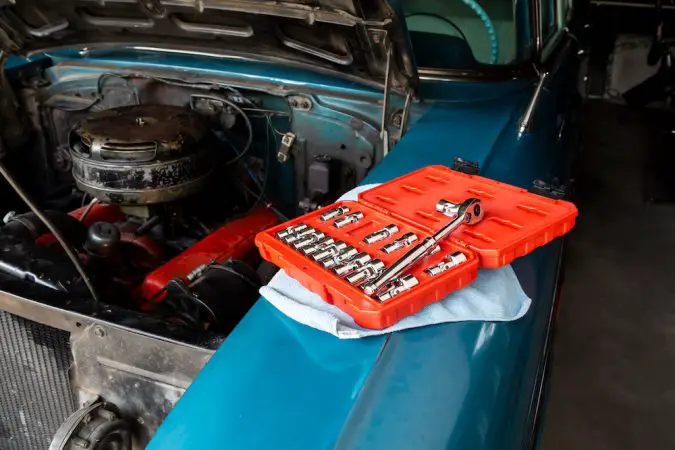The importance of rotors is becoming increasingly evident in the age of high-speed cars. All cars need dependable and long-lasting rotors to maintain both safety and performance. You might wonder how to tell if you need new rotors.
Brake rotors slow down and stop your vehicle. If there is an issue with rotors, you will find it difficult to stop your car in an emergency. They deteriorate over time as a result of their heavy use during braking.
The brakes on your car have several parts. This includes the rotors, calipers, and brake pads. The steel disc on each wheel easily distinguishes the routers. Calipers attach the brake pads to the rotor.
When you apply the brakes, the calipers press against the brake pad, bringing the vehicle to a halt.
If the rotors fail, you will be unable to stop your vehicle in an emergency.
You might wonder how to tell if you need new rotors. Continue reading to learn more about what to look for if you think there could be an issue with the rotors.
- How Do Rotors Work?
- Types Of Rotors
- Dashboard Warning Lights
- Car Shakes On Applying Brakes
- How Long Do Rotors Last?
- What If I Don’t Replace Rotors?
- Resurfacing Rotors
- Cost Of Replacement
Why Are Rotors Important?
Car rotors are critical components of the braking system. They are made of steel and serve as a surface for the brake pads to contact.
Rotors help in dissipating heat. They cool down the brakes each time you use them while driving. Rotors also prevent brake fade and other damage caused by prolonged braking.
How Do Rotors Work?
Brake pads squeeze rotors to slow and stop a vehicle. The brake rotor surface pushes against the brake pads. The pads push against the rotor until they make contact with the steel. It is only then that the car will stop.
Let’s take a step-by-step look at how the entire system works together.
- The process begins when you hit the brakes.
- Brake fluid is forced into the calipers.
- The fluid’s pressure pushes the brake caliper pistons out.
- In turn, the pressure on the brake pads increases.
- The brake pads and rotors rub against each other, causing friction and slowing or stopping the vehicle.
- The friction causes the brake pads and rotors to heat up.
Types Of Rotors That You Need To Tell Apart
There are four types of rotors:
1. Blank And Smooth Rotors
Standard sedans have blank and smooth rotors. These are the most common and least expensive types of rotors.
Blank and smooth rotors are made from recycled steel. As a result, the rotors may not last very long.
They are available at a wide range of prices. If you need good performance, they are low-cost alternatives. You might not have to spend a lot of money on it at first. But in the long run, its lifespan may be shortened due to poor quality or excessive use.
2. Drilled Rotors With Surface Holes
Drilled rotors have holes on the surface. This is to let heat, water, and dust escape. It keeps the braking system from being clogged.
These rotors are ideal for wet areas where it frequently rains. Drilled rotors cannot be used in high-performance vehicles in extreme heat as they may not last long.
You must use this type only if you often drive in the rain or snow. Rain removes dirt from brakes much more quickly than standard brake pads.
3. Slotted Rotors
Slotted rotors are similar to drilled rotors. Instead of holes, they have surface slots. These are better suited to large vehicles such as trucks and SUVs. Slots create more air between the rotor surface and the brake pads.
This results in a cooling effect and dissipates the heat very quickly. Moreover, there is less deposit of debris in the long term in slotted rotors.
4. Drilled And Slotted Rotors
These rotors combine the benefits of drilled and slotted rotors. The rotor surface has a spiral pattern of holes and slots. Sports and high-performance vehicles use these rotors. There is an additional cooling effect due to the drilled holes and slots.
A rotor with a ring of small holes and slots around its circumference allows cool air to enter. Hence, there would still be some friction between the brake pads. This happens even when the temperature rises significantly.
Thus, it prevents debris buildup that leads to brakes wearing out prematurely.
Steel & Carbon-Ceramic Rotors
Daily drivers have steel rotors since they are very affordable. Steel is used in cross-drilled, slotted, and holed rotors to minimize temperature and weight.
Carbon-ceramic rotors are mainly found in supercars. They are an integral part of racing technology. Carbon-ceramic rotors ensure fast cooling and are also long-lasting.
How To Tell If You Need New Rotors?
When you should replace your car’s rotors depends on your vehicle. It also depends on where you drive and how you drive. The guidelines below will tell you whether you need to replace your rotors.
1. Blue Color As A Sign To Tell You That You Need New Rotors
The blue color indicates that you need to replace the rotors because of thermal overload. When an engine is running at high temperatures, the rotors cannot provide any more power. They will eventually break down.
Driving in hot weather or on steep terrain may cause this sooner than usual.
The rotor experiences more heat than most other parts of a car. Thus, they will wear out faster, and you will have to replace them more frequently.
2. Squeaking Or Screeching Sounds
A car’s brakes work by pressing the brake pads against the rotating disc of the wheel. It creates friction and causes the wheel to slow down. When you apply the brakes, the energy in the vehicle converts into heat energy.
Metal parts, such as brake pads and rotors, expand and contract. It wears down the braking system, resulting in squeaking or screeching sounds.
There is a lot of friction between the pads and rotors. The friction causes the rotors to get too hot and warp. The wear will often create an audible noise that resembles nails on a chalkboard. It’s just another sign that something is wrong with the braking system.
3. The Steering Wheel Vibrates When You Need New Rotors
It’s common for cars to have a vibrating steering wheel as they age and become worn. If no liquids are leaking, you can move on to look at the other components. One of the most common problems is that you have to change or resurface the rotors.
A vibrating steering wheel indicates a change in the car’s rotors if one or both of them are warped. Warped rotors cause vibrations in the steering wheel. It causes the steering wheel to shake and become difficult to turn, which can lead to accidents.
Vibrations will increase if the rotor is not replaced at the first sign of wear. This will lead to brake system damage. It also delays an issue that you could have avoided with a simple part replacement.
4. How To Tell If You Need New Rotors In Case Of Excessive Wear
The brake pads work when they are squeezed together. When they do that, it causes them to develop more thermal energy. This creates frictional heat, which in turn causes additional wear on the rotors.
The piston in the brake caliper makes contact with the rotor, causing it to heat up and wear away quickly. Excessive wear can also occur when debris accumulates on the rotor’s surface. Or when parts that move against each other don’t have the proper lubricant.
The most common measure of wear is how far the pad material has worn off the rotor face. Over time, the friction creates heat that wears down the outer layer of steel on the rotor. This causes it to become less effective in dissipating heat.
5. Spongy Brakes Is A Bad Sign To Tell Of Needing New Rotors
Sometimes rotors wear down to the point where they can no longer grip the spinning wheel. This results in spongy brakes and causes them to slip against the rotating wheel.
The mere act of braking on a wheel hard enough will cause it to lock up and skid. There will be severe wear on the pad material, worsened by worn-out rotors.
The rotors also help absorb the braking energy. They distribute the energy evenly between the brake pads and wheels.
Are New Rotors Needed If I Have Spongy Brakes?
If your car’s rotors are not up to par, you will feel like you’re pushing the brakes with all your might when you try to stop. But you will find that even hard braking does not slow down your car.
Another reason is that the brake fluid gets used up and leaks out of the brake lines. It can then seep through several cracks and holes in the lining and leak. The fluid will bleed through to the spongy pad.
The pads will then be warped, soft, or spongy as they absorb moisture from the brake fluid.
6. Dashboard Warning Lights
A sure way of how to tell if you need new rotors is if you see a warning light. The warning light indicates that the car’s rotors will wear thin and need to be changed. It is important to know what these signs mean, as described in the car’s manual. Dashboard warning lights in cars light up only when something is not working properly.
The warning lights will come on when there is a faulty sensor or too much air in the brake pads. When this happens, the brakes will not work and can cause accidents if not taken care of promptly.
7. Burnt Spots Tell You Need New Rotors
Check the rotors for any burnt spots around the center. It may be a sign that you need to change the rotors. As rotors heat up through use, the heat will cause the surface of the rotor to become burnt. These burnt spots show that the rotors need a change and are not safe anymore.
Insufficient air cooling of the rotors and worn-out brake pads cause burn spots on a car’s rotors. It usually happens after several thousand miles of driving. The rotors get worn down by all the braking force they experience.
8. Do I Need New Rotors If Braking Is Poor?
When brake performance is poor, it means that the rotors are dirty or warped. This often leads to increased wear on the brake pads.
The gaps between the rotors widen as a result of wear, which causes the pads to wear down even more. This results in less friction surface on the rotor and reduced braking power.
Brake fading occurs when the vehicle must travel a greater distance before slowing down. When this happens, the rotors have a greater chance of warping.
9. Unusual Wear On Brake Pads, Rotors, Or Calipers
This type of wear can occur after driving the car for an extended period of time or with constant low pedal pressure. It may also happen because of faulty parts such as rotors and calipers. Unusual wear on these items indicates that you need to change the rotors.
After using them extensively, the pads, rotors, and calipers of a car do undergo some wear. Metal pieces from the brakes may also accumulate behind the rotor. If this is not addressed, it may result in a rotor problem, which may lead to more serious problems later.
10. Do I Need New Rotors If My Car Shakes When I Applying Brakes
Some cars will shake while braking. Rotors usually get worn out by constant braking. Uneven wear on the brake pads and rotor causes the shaking.
They can also wear down depending on the age and make of the car, especially if it is an older model. The shaking can come from other parts as well, but it is more likely to be a sign for you to change the rotors.
Shuddering or wobbling is a way of how to tell if you need new rotors.
11. Turning The Steering Wheel Is Difficult
Rotor wear is often caused by corrosion, and you have to look out for a hard-to-turn steering wheel. There is no way to tell for certain if rotors will need replacing without inspecting them. But if the steering wheel becomes difficult to turn, it is surely an indicator of how to tell if you need new rotors.
With corroded or rusty pads, the brakes may not work properly. If turning the steering wheel requires too much force, it may be a rotor issue.
12. Rust On The Rotors’ Surface
Rust harms rotors. In the long run, the presence of rust weakens the rotors.
Your car may remain parked for extended periods. Then when you drive it, the brakes will sound noisy. Rust accelerates the wear on the brake pads.
The front and rear rotors receive high levels of heat and moisture. The metal surfaces are exposed to salt and water. This results in rust and corrosion.
Excessive rust also has the same effect as corrosion. When it appears on the surface of the rotors, it indicates the need for the replacement of the rotors.
13. Scoring On The Rotors
The irregular surface of the brake pads can score the rotors of a car. This will prevent the calipers from turning the rotor. The grooves or scoring are due to normal wear and tear of the brake pads rubbing against the rotor.
If the grooves are deep enough, then we recommend a replacement.
14. Metal Shavings On The Ground
You may notice metal shavings on the ground and hear a grinding sound. It’s possible that there’s something stuck between the rotors and the brake pad. The object needs to be removed.
Grinding brakes can be a sign of a more serious issue. This includes worn-out brakes.
15. Car Veering To One Side
You might have a wheel bearing with too much play. This may result in a misalignment of the brake rotor, caliper, and pads. The brake pads on one side of the vehicle may not fully contact the rotor. It should be the same as the opposite side of the vehicle.
As a result, one side of your vehicle will experience less friction, causing your vehicle to pull to one side.
How To Tell You Need New Rotors By Age?
The average lifespan of rotors is typically 30,000 to 70,000 miles. They may last longer depending on the frequency of use.
The lifespan of the rotors of a car depends on how often you drive your car. It also depends on the design and type of rotors. They can deteriorate due to poor maintenance and frequent use.
What Happens If You Fail To Tell When You Need New Rotors?
Delaying the replacement of your rotors will lead to more serious problems. Some of them are given below:
- Damaged rotors may also mean damaged pads and calipers.
- Due to the high temperatures, worn-down rotors might develop grooves and get warped. It causes the brakes to function even less effectively.
- Stopping becomes very unsafe. Besides, you may need to replace more than just the rotors later. This includes replacing the brake pads and caliper, among other things.
- If you don’t get your rotors replaced when they’re due, it might affect the rest of your braking system.
It is not advisable to put the safety of other drivers and pedestrians at risk by failing to get this addressed. If your brake rotors seem defective, you should take your car to a mechanic or service center.
How To Tell If You Can Resurface Instead Of Replacing Rotors?
Yes, you can resurface your car’s rotors instead of replacing them. Resurfacing involves removing the outermost layer of metal from a car rotor using abrasives. Replacement, on the other hand, entails removing the entire rotor. But if there are deep scratches on the rotors, it is better to change them.
Suppose you know how to tell if you need new rotors, and find that they need a replacement. The cost of replacing car rotors is not cheap, especially for those who are on a budget.
Luckily, you have the option of resurfacing your car’s rotors instead of replacing them. Resurfacing the rotor will create a new layer on top of the old one and can be done in minutes.
In most cases, the cost of resurfacing is only a fraction of what it costs to replace a rotor.
Disadvantage Of Resurfacing Over Needing New Rotors
However, there are some downsides to resurfacing. These include low corrosion resistance, deterioration in braking performance, and an increase in noise. Some mechanics may recommend resurfacing once the rotors reach a certain point of wear and tear.
You can either have a mechanic do the resurfacing for you or buy the equipment and do it yourself.
How To Tell If You Need A Rotor Replacement?
Once you are familiar with how to tell if you need new rotors, the next thing to consider is cost. The cost of repairing or replacing your brake rotors depends on a variety of factors. Repair costs in one geographical area may not be the same as in another area. Besides, individual mechanics may quote different rates based on location.
The cost of repairs will also be different depending on your car’s make and model, as well as other factors. There will also be additional labor costs.
Rotor replacement is quite difficult to carry out on your own. You may believe that you can easily raise your car and remove the tires and brake components. But it is easier said than done.
You will most certainly need help changing your rotors.
Brake Rotors: Signs You Need to Replace Them
- Vibrating Steering Wheel: A pulsing brake pedal and vibration in the steering wheel when slowing down may indicate trouble with your brake rotors.
- Intermittent Screeching: When the braking system engages with grooved rotors, it produces an intermittent screeching sound.
- Blue Coloration: Excessive heat caused by riding the brakes or living in a mountainous area can cause a blue coloration on brake rotors, which may compromise the braking system.
- Excessive Wear: Brake rotors wear out over time, causing grooves or scoring, which can lead to screeching and indicate the need for replacement.
- Brake Pad Grip: Brake rotors are what your brake pads grip in order to stop your car.
- Heat Damage: Rotors become worn, warped, and uneven over time due to the extreme heat generated when brake pads press down on them.
- Smooth Braking and Steering: Smooth braking and steering require smooth rotor surfaces.
- Service Records: Check your service records and consider the last time you had your brake rotors inspected and replaced.
- Replacement Frequency: Brake rotors typically need replacing every 15,000 to 70,000 miles, but the exact number depends on your driving style, brake pads, and vehicle.
- Vinyl Record Analogy: The screeching sound from braking with grooved rotors is similar to the sound produced by a needle in the grooves of a vinyl record.
How To Tell If You Need New Rotors, Conclusion
Your brakes may no longer work as quickly as they did the day you first drove your car. You know best how safe braking feels in your car. You will surely notice the change in braking if there is an issue with the rotors.
Rotor wear is always progressive. Hence, evaluate their thickness, corrosion level, and surface condition at every service. The tips in this article will show you how to tell if you need new rotors. To ensure your safety on the road, replace your brake pads and rotors with new ones as soon as needed.

